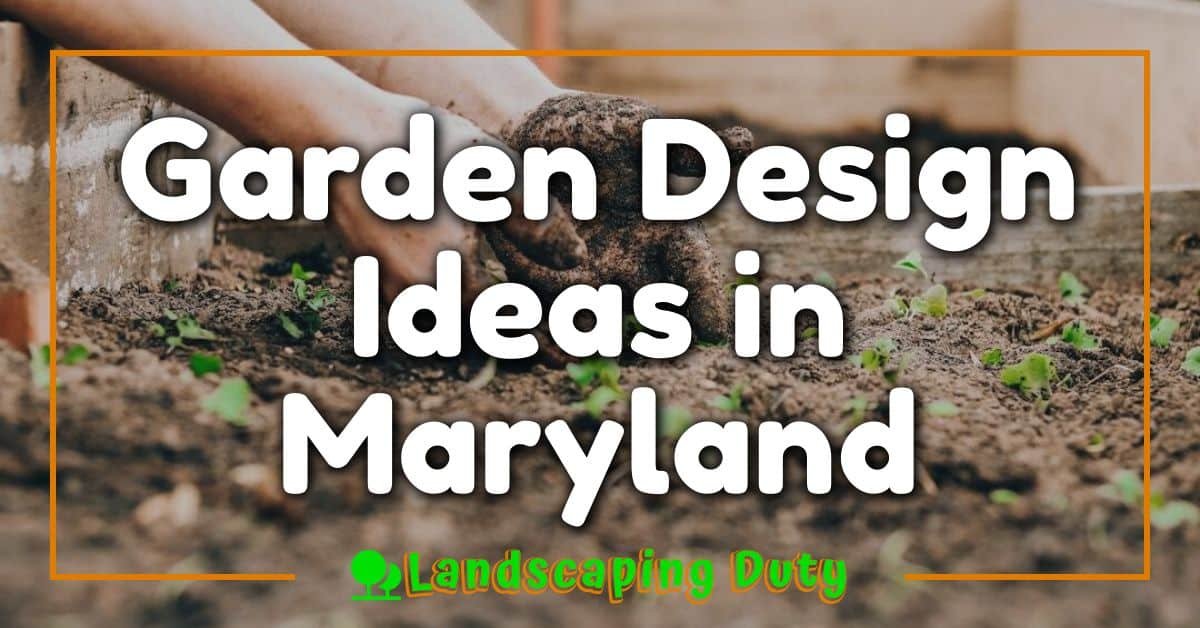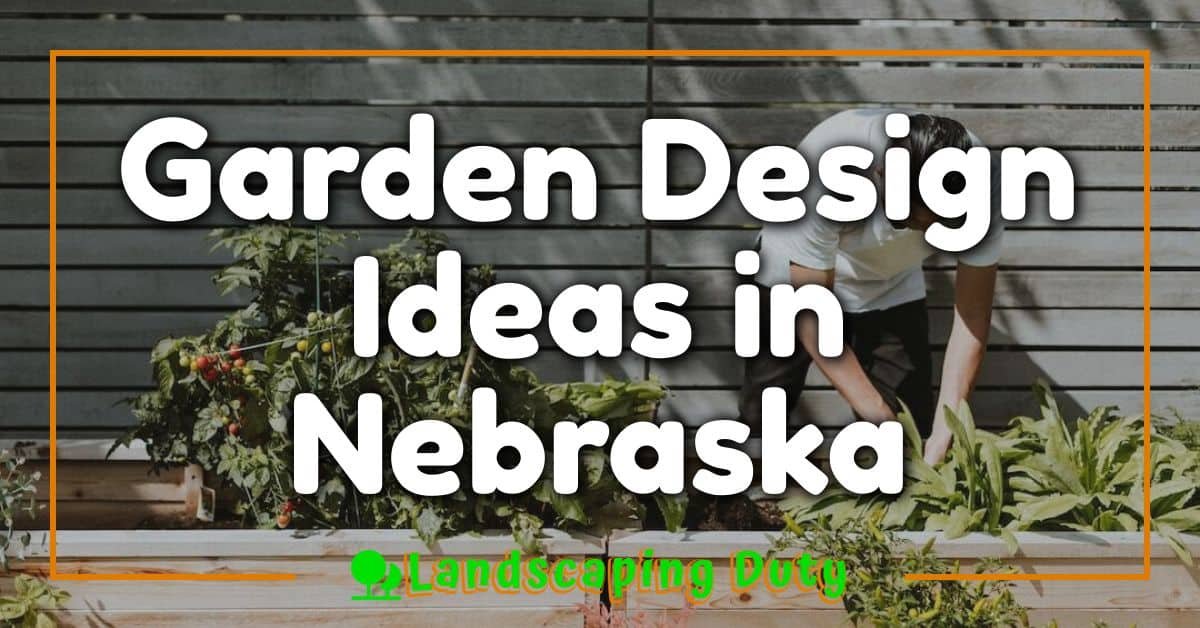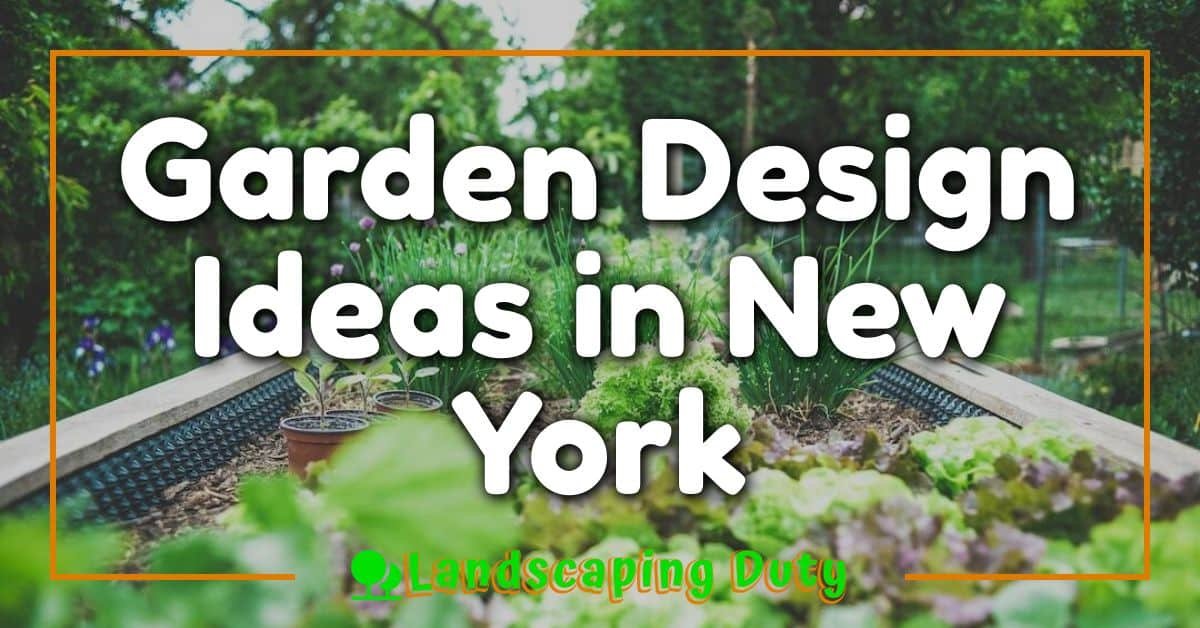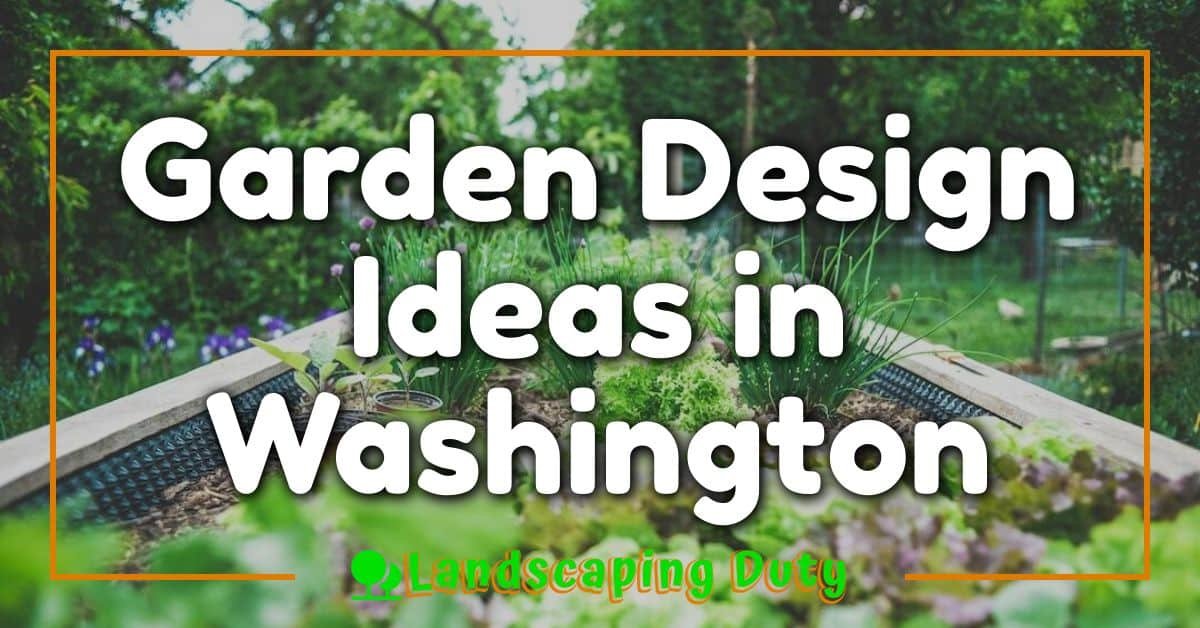If you’re living in the Sunflower State and looking to spruce up your garden, you’re in luck! Kansas, with its diverse climate and varied landscapes, offers a plethora of opportunities for creating breathtaking garden designs that are both practical and beautiful. Whether you have a green thumb or not, designing a garden that suits your lifestyle and enhances the beauty of your home is entirely possible!

Kansas’s four distinct seasons offer unique advantages for gardening enthusiasts. You’ve got spring blossoms to look forward to, vibrant summers where sun-loving plants thrive, colorful falls perfect for those crisp-weather crops, and even winter – yes, winter – can be an ideal time for some hardy vegetables and evergreens.
Let’s not forget about your personal style, too! From rustic cottage gardens filled with native flowers to modern minimalist layouts featuring sleek lines and geometric patterns; there’s no limit to what you can achieve. So put on your gardening gloves because we’re about to dig into some exciting garden design ideas tailored just for Kansas dwellers like yourself!
Understanding Kansas’ Unique Landscape
Let’s delve into the heartland of America, shall we? Kansas, often dubbed as “America’s Breadbasket”, boasts a unique landscape that makes it a real treat for garden enthusiasts. Known for its vast prairies and rolling wheat fields, this state offers a diverse range of gardening opportunities.
Kansas’ climate is primarily continental – meaning you’ll see cold winters and hot summers. That can be a challenge but hey, who doesn’t love a good challenge? It also means you’ve got an opportunity to experiment with both cool-weather and heat-loving plants in your garden.
You might be wondering about soil types in Kansas. Well, no worries there! This state is blessed with fertile soil – perfect for those vibrant blooms or juicy vegetables you’re dreaming of growing. The majority of the region has rich loamy soil which is just fantastic for most common garden plants.
Now let’s talk about regional differences within the state. Eastern Kansas tends to have more rainfall than Western Kansas – something to keep in mind when planning your garden design. Planting drought-resistant species could save you tons of time (and water!) if you’re out west.
And here are some quick facts on average temperature and precipitation:
| Month | Average High Temp (F) | Average Low Temp (F) | Precipitation (Inches) |
|---|---|---|---|
| Jan | 38 | 20 | 0.9 |
| Jul | 92 | 72 | 3.5 |
Remember folks, understanding your local landscape is essential before diving into any new gardening project! So go ahead – embrace the quirks that make Kansas unique and watch as your garden flourishes right alongside them!
Incorporating Native Plants in Your Garden Design
So, you’re thinking about adding a touch of Kansas to your garden? Great choice! There’s something truly magical about using native plants in your design. They not only thrive better (after all, they’re used to the local climate), but they also help support local wildlife like bees, butterflies and birds.
Now let’s talk specifics. Some popular Kansas natives you might consider are the Purple Coneflower, Black-eyed Susan, or Butterfly Milkweed. These aren’t just pretty faces – they’re hardy too! They can handle those hot summers and chilly winters without batting an eye.
Here are some quick stats for you:
| Plant | Bloom Time | Sunlight |
|---|---|---|
| Purple Coneflower | June-October | Full/Partial Sun |
| Black-eyed Susan | June-September | Full sun |
| Butterfly Milkweed | May-August | Full sun |
Isn’t it cool how each one has its own schedule? You could plan it so that there’s always something blooming in your garden!
But maybe you’re asking yourself: “How do I actually incorporate these into my garden?” Well, here are a few ideas:
- Border Patrol: Use tall plants like Switchgrass or Big Bluestem along fences or walls to create a natural barrier.
- Pop of Color: Bright flowers like Scarlet Sage or Blue Wild Indigo can add vibrant colors and attract pollinators.
- Ground Cover: Low-growing plants such as Prairie Dropseed provide excellent ground cover and prevent soil erosion.
Remember, when designing with native plants, it’s not just about aesthetics—it’s about creating a sustainable environment that benefits both you and the local ecosystem. So why not give it a try? You’ll be doing good while making your garden look great.
Functionality and Aesthetics: Balancing Both in Kansas Gardens
Creating a garden that’s both functional and aesthetically pleasing can seem like a tall order. But, let me tell you, it’s entirely possible! Especially here in the heartland of Kansas where we’re blessed with diverse seasons that bring out distinct characteristics in plants.
First off, you’ve got to think about how you’ll use your garden. Is it going to be an outdoor dining space? Maybe it’s your tranquil morning coffee spot? Or perhaps it’s primarily for growing fruits, vegetables or flowers? Identifying its purpose will help shape its design.
For instance,
- If it’s for outdoor dining or BBQs, consider sturdy plants like ornamental grasses or perennial flowers that add color but withstand human traffic.
- For serene spots perfect for unwinding with a book or sipping coffee, think calming colors. Soothing blues from Russian Sage or Catmint might fit the bill.
- Vegetable gardens demand full sun exposure so plot them accordingly.
Now let’s talk aesthetics – making your Kansas garden pleasing to the eye. There are no hard-and-fast rules here as beauty is subjective but there are some universally accepted design principles:
« Garden Design Ideas in Nevada: Your Guide to a Stunning Desert Oasis Garden Design Ideas in Missouri: Your Guide to a Lush Outdoor Oasis »
- Contrast: Mixing different shapes, sizes and textures creates visual interest. Pair feathery grasses with robust hydrangeas for example.
- Color: Use color theory to create harmonious schemes. Complementary colors (opposites on the color wheel) make each other pop while analogous colors (neighbors on the wheel) offer subtle elegance.
- Rhythm: Repeating elements throughout the garden can provide a sense of unity and cohesion.
And don’t forget those unique Kansas conditions – hot summers and chilly winters! Go for native plants which are adapted to these climates such as Butterfly Milkweed and Purple Coneflower.
So there you go! With careful consideration of function coupled with your unique aesthetic preferences, you’re well on the way to creating a Kansas garden that’s not only practical but also a feast for the eyes. Remember – it’s all about balance!
Space Utilization: Maximizing Small Garden Spaces in Kansas
Let’s talk about small spaces. It might seem like a challenge to squeeze everything you want into your petite garden, but with some savvy space utilization tricks, it’s totally doable!
Kansas’ unique climate and geography provide an array of opportunities for those looking to spruce up their compact backyards. You’re not limited by your garden’s size; instead, think of it as an opportunity to get creative. With the right approach, even the tiniest plot can be transformed into a stunning oasis.
Vertical gardening is one ingenious method that Kansans are using to maximize their small spaces. This style of gardening involves growing plants upward rather than outward, which can save you lots of precious ground space. Imagine trellises filled with vibrant climbing roses or ivy-covered walls – now that’s a sight for sore eyes!
Don’t forget about container gardening too; it offers flexibility and variety without eating up much room. Different types and sizes of containers add visual interest and depth to your outdoor area. They allow you to grow a diverse range of plants – from herbs and vegetables right on through to colorful annuals.
Here are a few quick tips:
- Use multi-purpose furniture: Think benches with built-in storage or tables that double as plant stands.
- Install hanging baskets: These beauties add height without taking up valuable ground space.
- Go minimalistic: Keep things simple by sticking to a few key colors or plant species.
These ideas aren’t exclusive either! Feel free to mix and match them based on what works best for your own backyard paradise in Kansas.
Emphasizing Seasonal Colors in Your Kansas Garden
You’re probably gazing out your window, wondering how to bring a pop of color to your Kansas garden. We get it; you want a landscape that reflects Kansas’s unique seasons and charm. So let’s dive right into how you can emphasize seasonal colors in your garden.
Have you considered adding spring-blooming bulbs like daffodils, crocuses, and tulips? They’re not only vibrant but also hardy enough to withstand unpredictable Kansas weather. And here’s the best part: These beauties come in an array of hues from yellows to pinks and whites, making them perfect for creating that springtime rainbow in your backyard.
As summer rolls around, native perennials like butterfly milkweed with its bright orange blossoms or blue wild indigo can take center stage. Don’t forget about sunflowers either! After all, they’re the state flower of Kansas for a reason. Plus, they add some much-needed height variation to keep things interesting.
Autumn calls for trees and shrubs that flaunt fiery reds and oranges as their leaves change color. Think about incorporating Black Tupelo or Red Maple into your design — these are known for their stunning fall displays.
Winter doesn’t mean you have to say goodbye to color! Bright berries from holly bushes or the deep greens of evergreen plants contrast beautifully against the snowy backdrop typical of Kansan winters.
So there you have it! You’ve got tons of options when it comes to highlighting each season’s signature colors right there in your very own garden. Now go on out there and create something beautiful!
Sustainable Gardening Practices for Kansas Homeowners
Ready to turn your garden into a sustainable paradise? It’s not as complicated as you might think, and it can make a big difference to your local environment.
One simple starting point is composting. You’ve probably got kitchen scraps like vegetable peelings, coffee grounds, or eggshells. Instead of tossing them in the trash, why not start a compost pile? It’s an easy way to reduce waste while creating nutrient-rich soil. Plus, it’ll save you money on store-bought fertilizers!
But what about water use? In Kansas’ hot summers, gardens can get thirsty! Consider using rain barrels to collect precious rainfall. These barrels can be hooked up directly to your downspouts and provide an ongoing source of free water.
| Sustainable Practice | Benefits |
|---|---|
| Composting | Reduces waste, creates rich soil |
| Rain Barrels | Conserves water, saves money |
Native plants are another huge part of sustainability. They’re uniquely adapted to Kansas’ climate and soil conditions and typically require less watering and care than non-native species. Plus they’re great at attracting local wildlife!
Lastly, let’s talk about pest control. Sure it’s tempting to reach for the chemicals when creepy-crawlies invade your garden but think twice! Many common pests can be managed naturally through methods like companion planting or encouraging beneficial insects.
- Companion planting: Certain plants repel specific pests.
- Beneficial insects: Ladybugs eat aphids; spiders catch flies.
Remember that small changes make big impacts! So go ahead – give these sustainable gardening practices a try in your own backyard oasis. Before long you’ll see how these earth-friendly choices don’t just benefit nature – they’ll bring joy and harmony into your life too!
Local Examples of Successful Garden Designs in Kansas
So, you’re looking for inspiration and what better place to start than your own backyard? Let’s take a virtual stroll through some of the most successful garden designs in Kansas.
First up is Overland Park Arboretum and Botanical Gardens. This place is a wonderland of natural beauty with its diverse plant life. It’s not just about the plants though. The design aspects are truly fascinating! They’ve got themed gardens like the Monet Garden, replicating the feel of Claude Monet’s iconic paintings. Now that’s what you call creative!
Another gem tucked away in Topeka is Ted Ensley Gardens at Lake Shawnee. Known for their stunning annual displays, this garden layout boasts an exquisite rose garden, rock garden and even a meditation area. Talk about variety! Their use of local plants shows how well they understand their environment and work with it.
Speaking of working with the environment, let’s talk about Dyck Arboretum of the Plains in Hesston. This arboretum showcases native Kansas plants beautifully arranged to create an ecosystem that attracts local wildlife. It’s proof that you don’t have to go exotic to create something breathtakingly beautiful.
Now we can’t forget Wichita’s Botanica Gardens which boast over 30 themed gardens including Shakespeare Garden where each plant mentioned in his works has been thoughtfully planted. A literary twist on gardening? We’re here for it!
There you have it! These successful Kansas gardens show us how creativity knows no bounds when designing outdoor spaces:
- Overland Park Arboretum and Botanical Gardens: Themed gardens
- Ted Ensley Gardens at Lake Shawnee: Diverse areas from rose beds to meditation spots.
- Dyck Arboretum of the Plains: Native plant showcase.
- Wichita’s Botanica Gardens: Literature inspired plantings.
These examples should give you plenty of inspiration for your own Kansas garden. Remember, it’s all about working with what you’ve got and adding your personal touch. Happy gardening!
Conclusion: Bringing Your Kansas Garden Design to Life
So you’ve read through the tips, learned about the plants, and taken in some inspiration. Now it’s time to bring your Kansas garden design to life!
Don’t be afraid to get creative with your space. Remember it’s yours! Whether you’re envisioning a vibrant bed of native wildflowers or a serene Zen-inspired oasis, there’s no wrong answer. Trust your instincts and let them guide you.
As you start building, keep in mind that patience is key. Gardens aren’t built overnight but watching them grow is part of the fun! You’ll surely feel a sense of accomplishment as each new bud sprouts and every tree grows taller.
In times when things don’t work as planned, remind yourself that gardening is also about learning – trial and error are part of this journey. What doesn’t work for one year might be the magic solution for the next!
Here are some final reminders:
- Keep up with regular watering based on your plants’ needs.
- Fertilize responsibly – too much can harm both your plants and the environment.
- Don’t forget about winter care for perennials and trees.
So what’s left now? Just enjoy the process! Immerse yourself in nature’s beauty right at your doorstep. With these garden design ideas in Kansas, we hope you’re well on your way to creating an outdoor paradise that reflects who you are.
Happy Gardening!
















